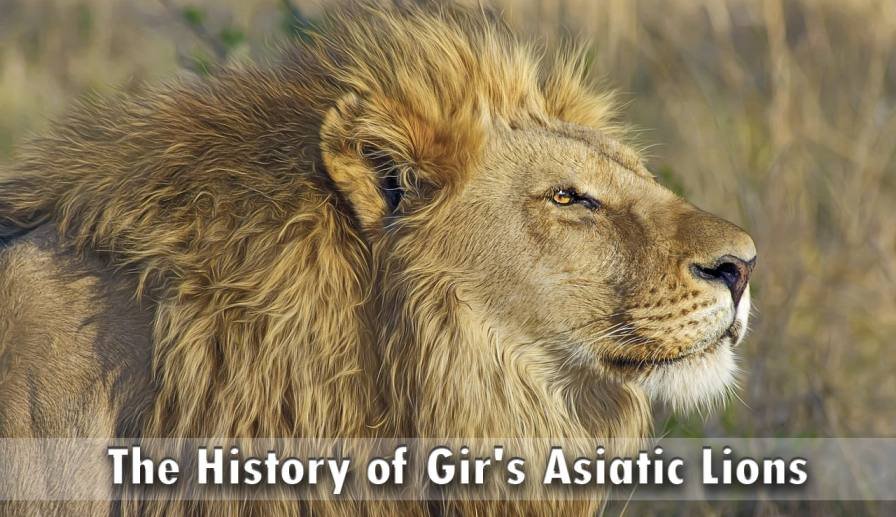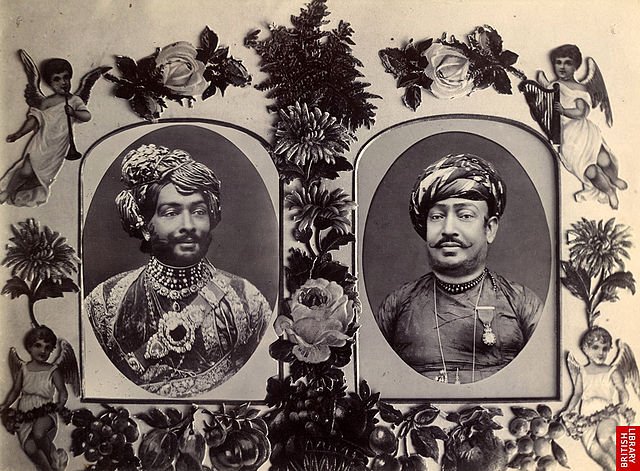The History of Lions in india : A Detailed Chronicle

Early 20th Century: The Brink of Extinction
At the start of the 20th century, Asiatic lions were in serious trouble. Once found across the Middle East and India, their numbers had plummeted due to excessive hunting and habitat destruction. By the early 1900s, there were only about 20 lions left in the wild, mostly in the Gir forest region of the princely state of Junagadh. The situation was dire, and without immediate action, the species was on the verge of extinction.
1900s to 1940s: Initial Conservation Efforts
The Nawab of Junagadh, Nawab Sir Muhammad Rasul Khanji Babi, realized the urgency to protect these magnificent animals. He banned hunting in his territory and began early conservation efforts to protect the lions’ habitat. These initial steps, although basic, were crucial in giving the Asiatic lions a fighting chance.

Nawab Sir Muhammad Rasul Khanji Babi
Image Credit : https://commons.wikimedia.org
1950s: National Recognition and Continued Efforts
After India gained independence in 1947, the new government started paying more attention to wildlife conservation. The efforts of the Nawab were acknowledged, and the Indian government began to support and enhance these conservation initiatives. Despite these efforts, the lion population was still fragile, highlighting the need for a more organized approach to conservation.
1965: Establishment of Gir National Park
The establishment of Gir National Park in 1965 was a pivotal moment in the history of Asiatic lion conservation. Recognizing the need for a dedicated sanctuary, the Indian government officially declared Gir as a protected area. This provided a secure and managed habitat for the lions, marking a significant step forward in their conservation.
1970s to 1980s: Intensive Conservation and Management
Following the establishment of the park, efforts to conserve the Asiatic lions intensified. The forest department, along with various wildlife organizations, implemented comprehensive management plans. These included habitat restoration, anti-poaching measures, and community engagement programs. Scientific research played a key role in monitoring the lion population, ensuring their health and well-being.
1990s: Community Involvement and Eco-Development
The 1990s saw a shift towards involving local communities in conservation efforts. Realizing that the support of local people was essential, various projects were launched to provide alternative livelihoods and reduce dependence on forest resources. This approach helped to mitigate human-wildlife conflicts and foster a sense of responsibility among the local population.
2000s: Technological Advancements and Modern Conservation Techniques
The turn of the century brought new technologies that significantly boosted conservation efforts. GPS collars, camera traps, and advanced tracking systems allowed for precise monitoring of lion movements and behavior. These technologies provided valuable data, leading to more effective conservation strategies. Modern veterinary care also ensured the health of the lion population.
2010s: Population Growth and Expansion
By the 2010s, the efforts to save the Asiatic lions had paid off. The population had grown to over 500 individuals. To accommodate this growing population, additional protected areas and conservation reserves were established. Gir’s success story became an international model for wildlife conservation.
Present Day: A Thriving Sanctuary and Future Challenges
Today, Gir National Park is home to over 600 Asiatic lions, the only place in the world where they can be seen in their natural habitat. This success, however, brings new challenges. With the lion population increasing, human-lion interactions have also risen, requiring ongoing management efforts to mitigate conflicts. Additionally, maintaining genetic diversity remains a critical concern, necessitating continuous research and adaptive strategies.
Conclusion
The history of Gir’s Asiatic lions is a remarkable story of survival and recovery. From the brink of extinction in the early 1900s to a thriving population today, the journey of these lions is a testament to the power of dedicated conservation efforts. Gir National Park stands as a beacon of hope and an example of successful wildlife conservation. At Wildlife Nest, we celebrate this incredible journey and invite everyone to explore Gir National Park, where history and nature come together in a breathtaking display of resilience and beauty.
The Most Famous Lion in Gir National Park: “Gidad”
Gir National Park, home to the only population of Asiatic lions in the world, boasts many impressive lions. Among them, one lion has become particularly famous for his remarkable characteristics and legacy: “Gidad.”
Gidad, named after the Gujarati word for “vulture,” earned his fame due to his distinctive traits and significant influence within the pride. His life and characteristics have made him a symbol of the resilience and majesty of the Asiatic lions in Gir.
Frequently Asked Questions (FAQ)
Q: What was the state of the Asiatic lion population at the start of the 20th century? A: At the start of the 20th century, the Asiatic lion population was in severe decline due to excessive hunting and habitat destruction, with only about 20 lions remaining in the wild, primarily in the Gir forest region of Junagadh.
Q: Why were Asiatic lions on the verge of extinction in the early 1900s? A: Asiatic lions were on the verge of extinction due to rampant hunting and significant habitat loss.
Q: Who initiated the early conservation efforts for Asiatic lions? A: Nawab Sir Muhammad Rasul Khanji Babi of Junagadh initiated early conservation efforts by banning hunting in his territory and working to protect the lions’ habitat.
Q: What impact did the Nawab’s efforts have on the lion population? A: The Nawab’s efforts were crucial in giving the Asiatic lions a fighting chance, stabilizing their population during a critical period.
Q: How did the Indian government respond to the plight of Asiatic lions after independence? A: After independence in 1947, the Indian government recognized the efforts of the Nawab and began supporting and enhancing conservation initiatives for Asiatic lions.
Q: Why was a more organized approach to conservation needed in the 1950s? A: Despite initial efforts, the lion population remained fragile, highlighting the need for a more organized and systematic conservation strategy.
Q: When was Gir National Park established and why is it significant? A: Gir National Park was established in 1965, marking a pivotal moment in Asiatic lion conservation by providing a secure and managed habitat for the species.
Q: What role did Gir National Park play in lion conservation? A: The establishment of Gir National Park formalized conservation efforts and created a dedicated sanctuary for the lions, significantly aiding in their recovery.
Q: What conservation measures were implemented in the 1970s and 1980s? A: Comprehensive management plans were implemented, including habitat restoration, anti-poaching measures, community engagement programs, and scientific research.
Q: How did scientific research contribute to lion conservation during this period? A: Scientific research was key in monitoring the lion population, ensuring their health, and informing effective management practices.
Q: Why was community involvement important in the 1990s? A: Involving local communities was essential for sustainable conservation, helping to reduce dependence on forest resources and mitigate human-wildlife conflicts.
Q: What kind of projects were launched to involve local communities? A: Various eco-development projects were launched to provide alternative livelihoods and foster a sense of responsibility towards wildlife conservation.
Q: What technological advancements helped boost conservation efforts in the 2000s? A: Technologies such as GPS collars, camera traps, and advanced tracking systems significantly enhanced the monitoring and management of lion populations.
Q: How did modern veterinary care impact the lion population? A: Modern veterinary care ensured the health and well-being of the lion population, contributing to their overall recovery.
Q: What was the status of the Asiatic lion population by the 2010s? A: By the 2010s, the Asiatic lion population had grown to over 500 individuals, demonstrating the success of conservation efforts.
Q: What measures were taken to accommodate the growing lion population? A: Additional protected areas and conservation reserves were established to accommodate the growing lion population.
Q: How many Asiatic lions currently reside in Gir National Park? A: Today, Gir National Park is home to over 600 Asiatic lions.
Q: What challenges accompany the success of Gir National Park? A: The increasing lion population has led to more human-lion interactions, requiring ongoing management efforts to mitigate conflicts and maintain genetic diversity.


